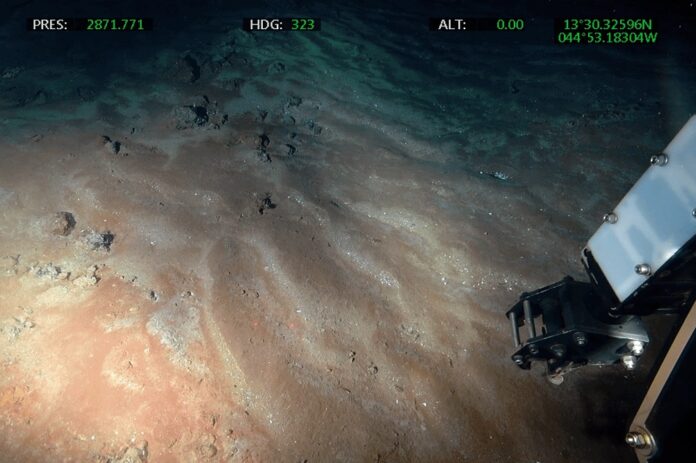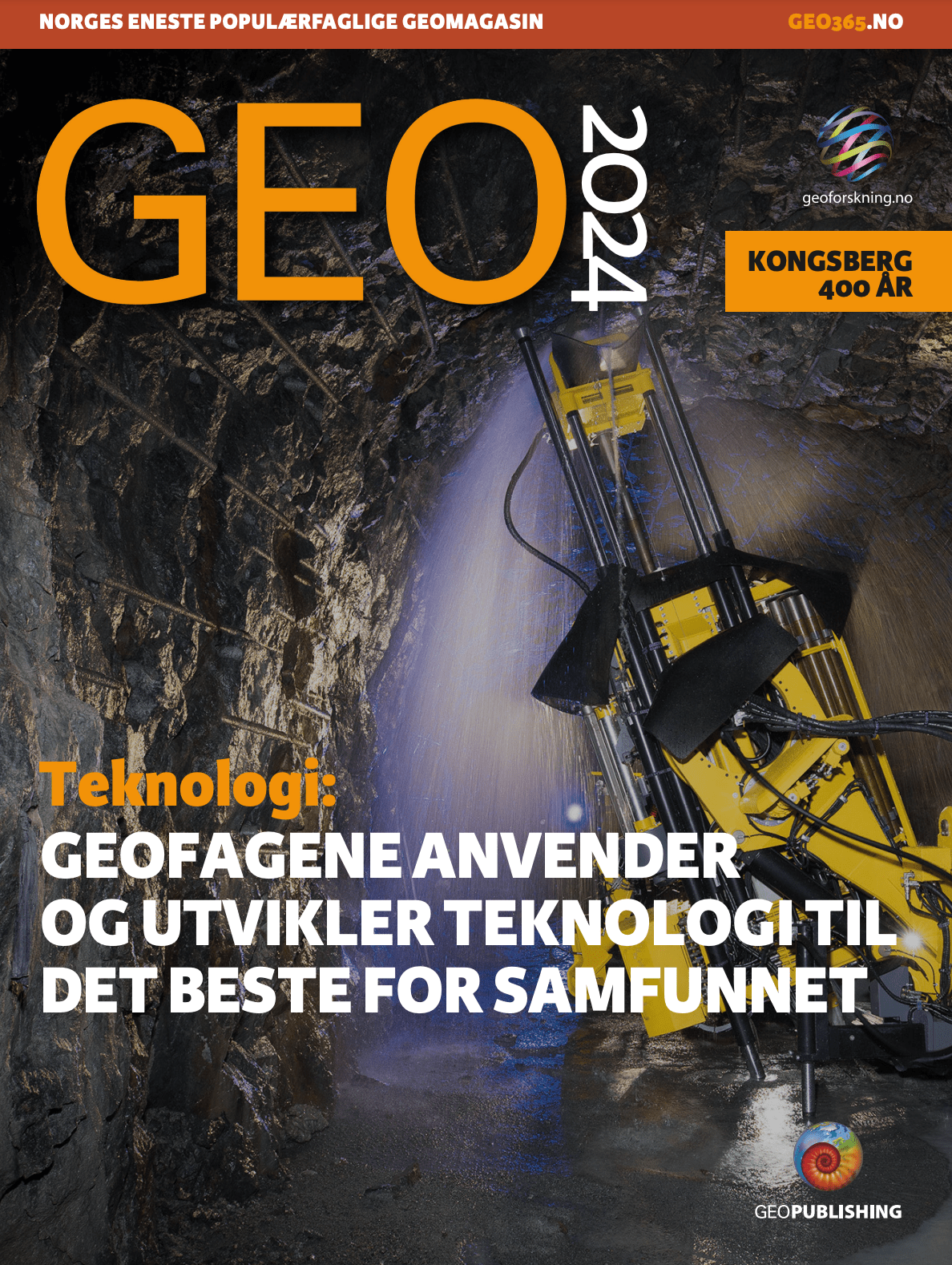Metalliferous sediments with thin pelagic sediment cover found at the Semenov-4 hydrothermal field during the first expedition of the Project ULTRA earlier this year. Source: Acer Figueroa / Project ULTRA
The shift from a fossil-based to a renewables-based society will require massive amounts of metals and it is uncertain whether current mines and mine project on land will be able to ramp up production sufficiently in the years to come.
Some of the metals that are considered vital for the green shift include copper, nickel, zink, manganese and rare earth elements (REE).
High-grade ores of the very same metals are found in deep-sea deposits. One of these types of deposits are seafloor massive sulphides – SMS deposits.
They are created by hydrothermal activity along spreading ridges that spew out boiling hot, mineral-rich water from the Earth’s interior.
Read more on SMS deposits here: The ore factories on the seabed
Although more than 600 SMS deposits are known worldwide today, their economic potential is still uncertain, as they have barely been drilled and technological challenges related to extraction remains.
A key challenge is simply finding them. This is especially true for inactive systems that no longer spew out water with detectable geochemical signatures. They might also be buried by sediments, and their three-dimensional structure is difficult to map.
Still, they are preferred over active hydrothermal systems as one avoid challenging high temperature fluids and disturbing vulnerable fauna. Extinct SMS deposits are largely barren.
Look to the sediments!
Earlier this year, a group of scientists went on an expedition to the Semenov hydrothermal field cluster on the Mid-Atlantic Ridge (13º30’N, approximately the same latitude as Senegal and Nicaragua) as a part of the ULTRA project.
The project, which will return to the ridge next year, has and will collect a variety of data from the sites of mineralization, including drilling and coring, rock collecting, mapping the seafloor and using ocean bottom seismometers. More on the aim of the project can be found here.
At the NCS Exploration – Deep Sea Minerals conference in October, Acer Figueroa, PhD student at the National Oceanography Centre (University of Southampton), will present some lessons learned in using metal-bearing sediments to identify extinct SMS deposits.
According to Figueroa, metalliferous sediments occur around mineral deposits as haloes, and by coring and mapping the distribution of these sediments, they can point in the direction of past and present (active) hydrothermal deposits.
In his talk, Figueroa will make the case that mapping the distribution of metal-rich sediments should be considered an exploration approach for SMS deposits.
Norwegian participants in Project ULTRA are the University of Bergen, Equinor and Green Minerals. Other partners include the universities of Cardiff, Southampton, Leeds and the Memorial University (Canada), as well as GEOMAR (Germany).
Remote detection
Researchers at the University of Bergen has demonstrated the use of self-potential as a geophysical measurement method that has worked well in identifying extinct SMS deposits along the Mohn’s Ridge.
Self-potential (SP) is a measure of electrical voltage differences in rocks. Such stress differences can occur, for example, in rocks that contain conductive minerals and metals, including sulphides. This type of measurement can be performed in the deep sea using self-propelled and remote-controlled underwater robots (AUVs) equipped with sensors.
Geoforskning.no: En egnet letemetode
Expronews.com: A promising exploration method
NCS Exploration – Deep Sea Minerals 2022
Acer Figueroa will deliver his talk in session 4 – Exploration Strategy / Exploration Technology on October 27th. In this session, you can also catch talks by Kongsberg Maritime, Argeo, NTNU, Aker Marine Minerals, Impossible Sensing, OFG Multiphysics and AMC Consultants.
October 26 – 27th 2022
Bergen, Norway



